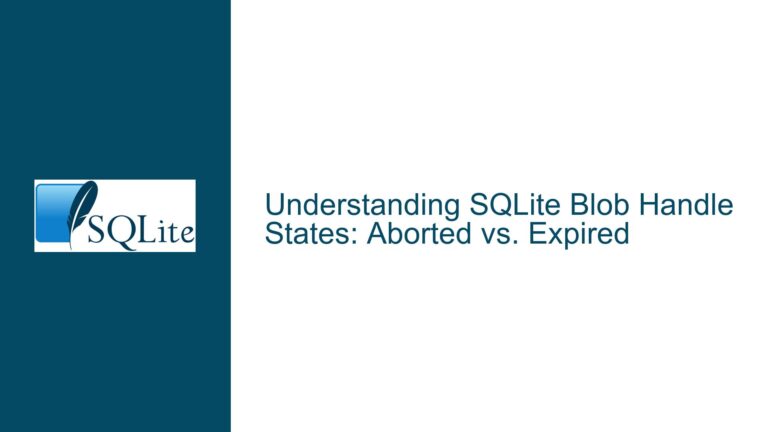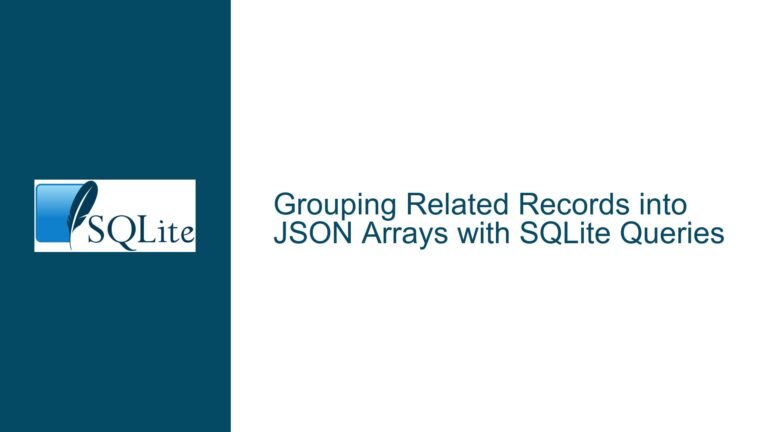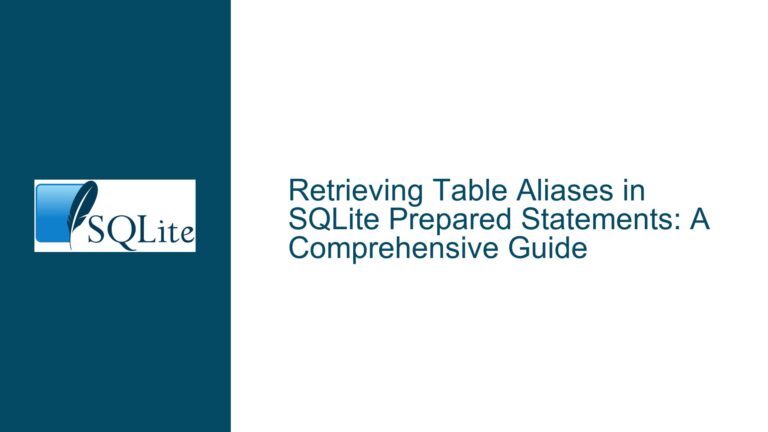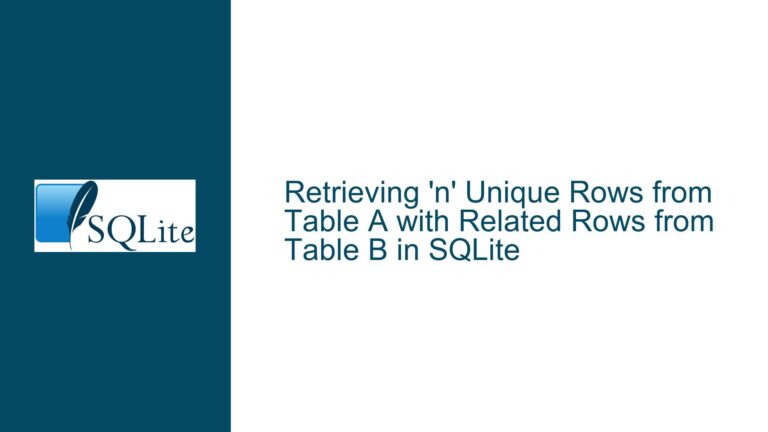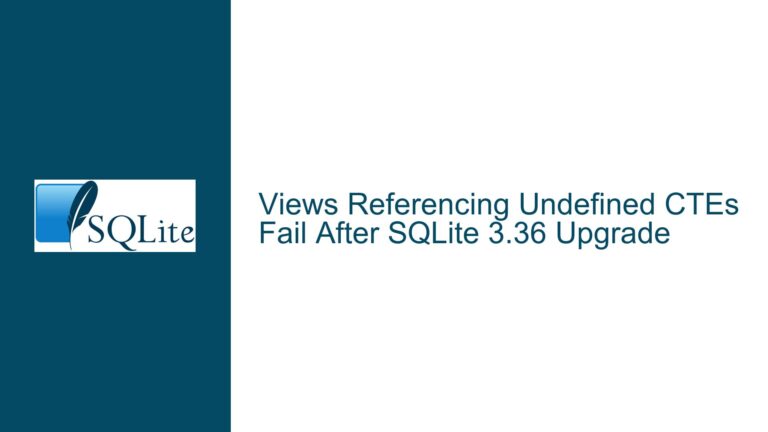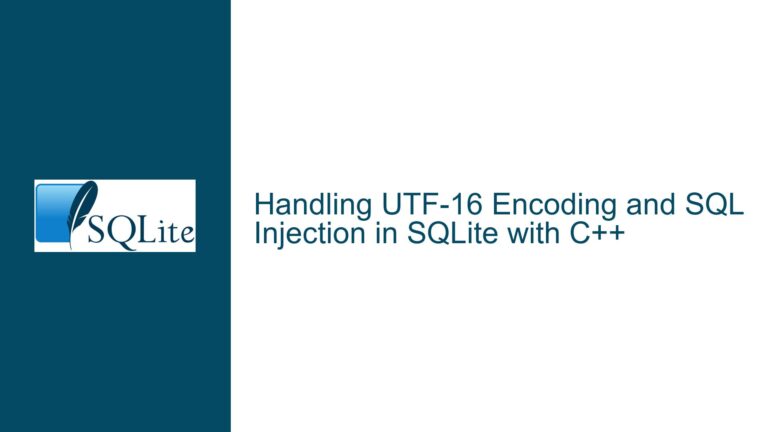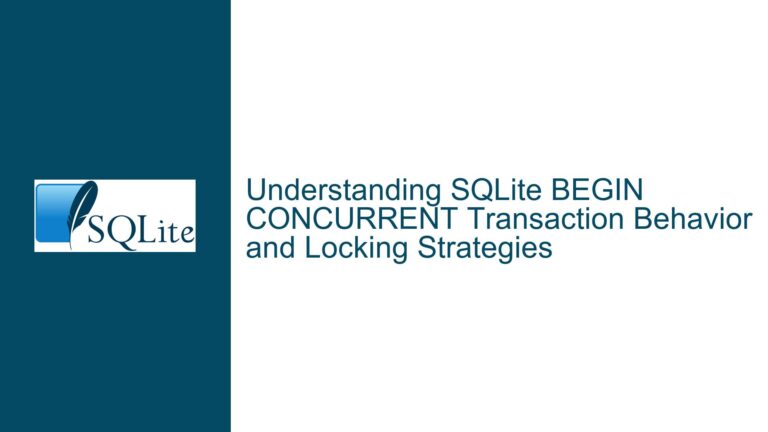SQLite Blob Handle States: Aborted vs. Expired
Issue Overview: Clarifying the "Aborted" and "Expired" States in SQLite Blob Handles In SQLite, the handling of Binary Large Objects (BLOBs) is a critical aspect of database operations, particularly when dealing with large data objects such as images, documents, or other multimedia content. The SQLite C API provides several functions to interact with BLOBs, including…
